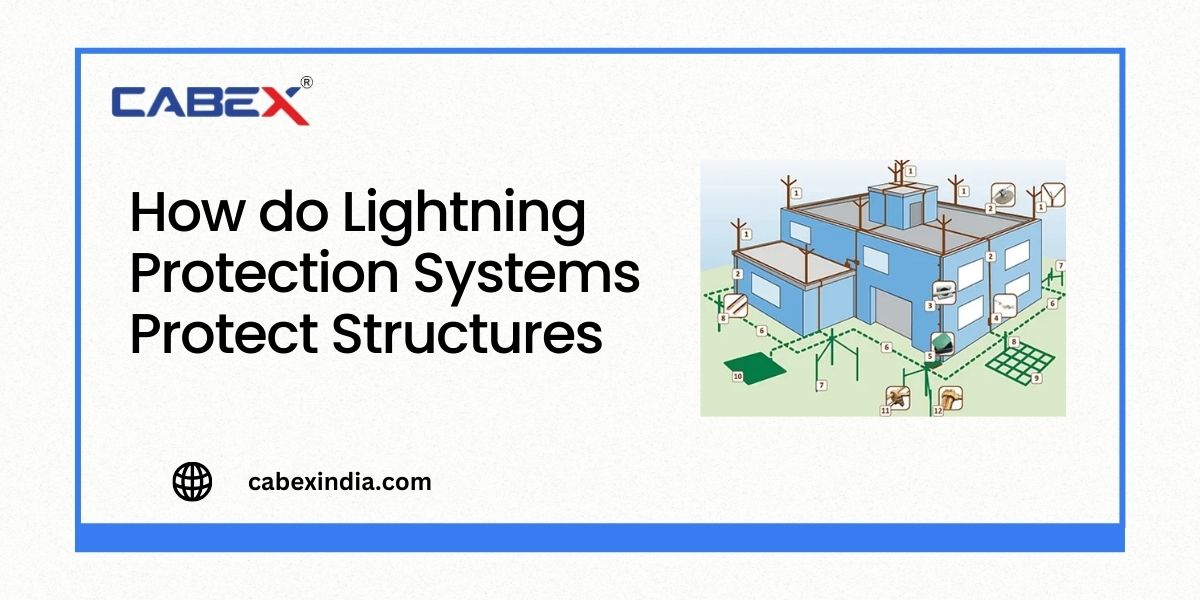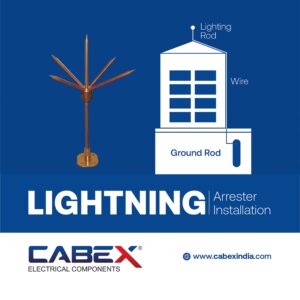Introduction
A lightning protection system (LPS), often referred to as a lightning rod or lightning conductor, is a network of components designed to safeguard structures, buildings, and other objects from damage caused by lightning strikes. lightning a breathtaking yet formidable force of nature, poses a significant threat to structures and the safety of their occupants. The incredible power of a lightning strike can result in fires, structural damage, and even fatalities. However, science and engineering have provided us with a reliable defense against this natural menace – lightning protection systems. In this comprehensive guide, we will delve deep into how these systems work, their components, installation, and the critical role of tape clips in their effectiveness.
Understanding Lightning Protection Systems
1. The Basics of Lightning
Before we dive into lightning protection systems, it’s crucial to understand the nature of lightning. Lightning is a discharge of atmospheric electricity, characterized by a sudden and intense flash of light accompanied by thunder. It occurs when electrically charged regions within a thundercloud or between a cloud and the ground discharge, equalizing the electric potential.
2. The Need for Lightning Protection Systems
Lightning can cause devastating damage. When it strikes a structure, it can lead to:
Fires : Lightning can ignite flammable materials, causing destructive fires.
Structural Damage: The immense energy of a lightning strike can damage roofs, walls, and foundations.
Electrical Surges: Lightning can induce electrical surges that harm appliances and equipment.
Injury or Fatality: People inside or near the structure are at risk of injury or death.
3. Lightning Protection Systems (LPS)
Lightning protection systems are engineered to mitigate the risks associated with lightning strikes. They are designed to intercept, conduct, and disperse lightning safely into the ground, preventing harm to structures and occupants.
Components of Lightning Protection Systems
A typical lightning protection system comprises several key components:
1. Air Terminals (Lightning Rods)
Air terminals, commonly known as lightning rods, are mounted on the highest points of a structure. They provide a preferred point for lightning to strike, diverting it away from the structure.
2. Conductors
Conductors are metal cables or strips that connect the air terminals to other parts of the system. They facilitate the safe flow of electrical energy generated by a lightning strike.
3. Bonding
Bonding conductors ensure all metal parts of the structure are interconnected, preventing differences in electrical potential that can lead to damage.
4. Grounding
Grounding electrodes, such as ground rods or plates, provide a path for lightning’s energy to safely dissipate into the ground.
5. Surge Protection Devices (SPDs)
SPDs safeguard electrical and electronic systems within the structure by diverting transient voltage surges caused by lightning away from sensitive equipment.
6. Tape Clips: Enhancing Lightning Protection Systems
While tape clips may not be the most widely recognized component of lightning protection systems, they play a crucial role in ensuring the effectiveness of the system. Tape clips are used to secure the conductors to the structure and provide support. They help maintain the proper positioning and spacing of the conductors, which is essential for the system’s overall performance.
The Role of Tape Clips in Lightning Protection Systems
Tape clips are often made of durable and corrosion-resistant materials like stainless steel. They are used to secure and support conductors in lightning protection systems. While they may seem like simple fasteners, tape clips serve several critical functions:
1. Ensuring Proper Conductor Positioning
Conductors in lightning protection systems must be precisely positioned to effectively intercept lightning strikes and safely conduct the electrical energy. Tape clips are used to secure conductors in the correct location and maintain the required spacing between them. This precision is essential for the system’s overall performance.
2. Preventing Damage
In regions prone to high winds, storms, or even vandalism, conductors can be subjected to external forces. Tape clips help anchor the conductors securely to the structure, preventing them from being dislodged or damaged. This ensures the system remains operational under adverse conditions.
3. Long-Term Reliability
Lightning protection systems are expected to provide reliable protection for many years. Tape clips play a role in the longevity of the system by preventing sagging, shifting, or deterioration of conductors over time. This contributes to the system’s long-term reliability.
4. Aesthetics and Integration
Lightning protection systems are often installed on buildings and structures where aesthetics matter. Tape clips are designed to be unobtrusive and blend seamlessly with the structure’s appearance, ensuring that the system does not compromise the overall aesthetics.
Installation and Maintenance
The proper installation of tape clips, like other lightning protection system components, is essential for their effectiveness. Certified and experienced installers understand the importance of correct positioning and spacing of tape clips to ensure the system functions optimally.
Additionally, regular maintenance is crucial. Inspections should include checking for any signs of damage or corrosion on tape clips and conductors. Damaged or corroded components should be replaced promptly to maintain the system’s integrity.
How Lightning Protection Systems Work
The operation of a lightning protection system can be summarized in a few key steps:
1.Interception
When a thunderstorm approaches, the air terminals or lightning rods provide an attractive target for lightning. Lightning is more likely to strike these elevated points rather than the structure itself.
2. Conduction
When lightning strikes the air terminal, it travels through the conductors. These conductors are designed to carry the immense electrical current safely.
3. Dispersion
The energy from the lightning strike is gradually dispersed into the ground through the grounding electrodes. This process reduces the risk of fire, structural damage, or harm to occupants.
4.Surge Protection
Surge protection devices help shield sensitive electronic and electrical systems from voltage surges that can occur during a lightning strike.
Installation and Maintenance
Proper installation and regular maintenance are vital for the effectiveness of a lightning protection system. A trained and certified lightning protection system installer should handle installation. Maintenance involves inspecting the system for damage, ensuring proper grounding, and replacing components as needed.
Benefits of Lightning Protection Systems
Investing in a lightning protection system offers numerous advantages:
1.Safety
Protects occupants from lightning-related injuries.
2.Property Protection
Prevents fires and structural damage.
Equipment Protection
Safeguards electrical and electronic systems.
Insurance Premiums
Installing lightning protection can lead to lower insurance premiums.
Conclusion
In the battle against the awesome power of lightning, lightning protection systems stand as our defenders. These systems, with their air terminals, conductors, bonding, grounding, surge protection devices, and yes, tape clips, create a comprehensive shield against the destructive force of lightning. They ensure the safety of structures, the well-being of occupants, and the protection of valuable assets. Lightning may be unpredictable, but with a well-designed and maintained lightning protection system, we can confidently face the storm.
FAQ
What is a lightning protection system (LPS)?
A lightning protection system is a network of components designed to safeguard structures and occupants from lightning strikes. It includes lightning rods, conductors, grounding systems, and surge protection devices.
What role do conductors play in lightning protection?
Conductors, typically metal cables or strips, carry the electrical current from lightning strikes safely to the ground. They ensure the energy is dissipated without causing damage.
How does a lightning protection system work?
LPS works by intercepting lightning strikes with lightning rods, safely conducting the electrical energy through conductors, and dispersing it into the ground through a grounding system. Surge protection devices protect against electrical surges.
What role do conductors play in lightning protection?
Conductors, typically metal cables or strips, carry the electrical current from lightning strikes safely to the ground. They ensure the energy is dissipated without causing damage.





